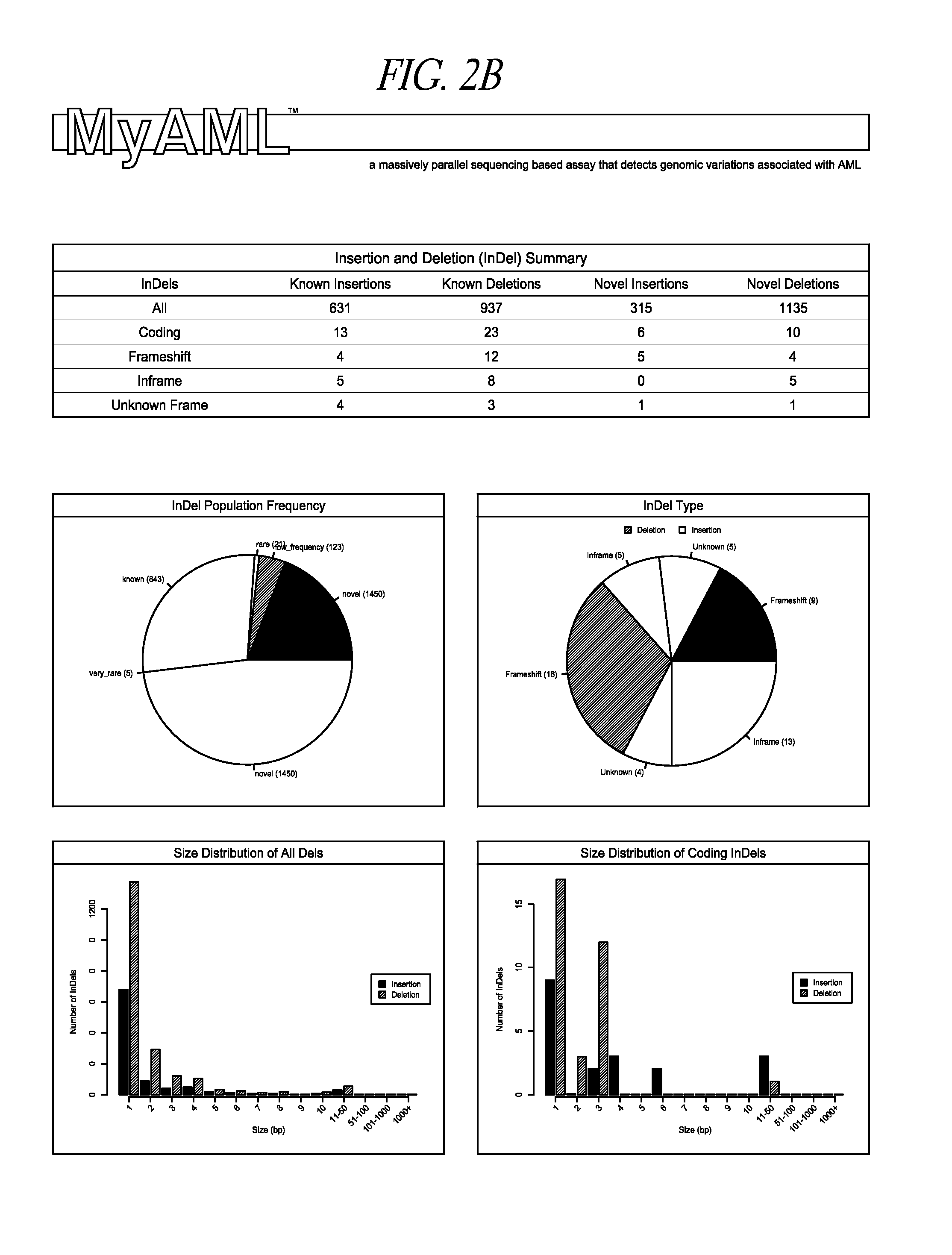Targeted screening for mutations
a technology of mutations and screening, applied in the field of gene typing, can solve the problems of high cost of sequencing, stymied practical utility, and limited current tests and sequencing technologies,
- Summary
- Abstract
- Description
- Claims
- Application Information
AI Technical Summary
Benefits of technology
Problems solved by technology
Method used
Image
Examples
example 1
Design of Capture Probes for Screening of AML
[0071]By extensive curation of the literature on genes known to or suspected to impact development of AML, we have compiled a list of 194 relevant genes. The gene list is broken down into 3 subsets based on (1) NCCN / ELN guidelines; (2) those genes most commonly rearranged in AML that include breakpoints with their intronic structures (3) coding sequences or exons of genes suspected to be involved in the etiology of AML development (see Table 1). One major literature source was The Cancer Genome Atlas that recently characterized 200 AML samples. Based on the somatic mutation frequency rate for AML, it is calculated that 95% of all the mutations that are involved in AML have now been identified. The literature that was used for compiling this panel includes well over 300 publications.
TABLE 1NCCN / ELN GuidelinesStructural Rearrangements: Inv(16) t(16;16) t(8;21) t(15;17) +8 t(9;11) −5 5q-−7 7q-11q23 inv(3)t(3;3) t(6;9) t(9;22)[These regions a...
example 2
Identification of Mutations in AML Cells
[0073]Genomic DNA isolated from a mixture of AML cells was fragmented into average sizes of 700 basepairs (bp) fragments using a Covaris ultrasonicator (Covaris, Woburn, Mass.). DNA fragments were then purified using Ampure XP (Beckman Coulter, Brea, Calif.) following manufacture suggested procedures. This step is important to separate out the longer, preferred fragment sizes (700 bp), from the smaller, less preferred fragment sizes (below 150 bp, and greater than 1500 bp). Longer, purified DNA fragments were analyzed by a LabChip (PerkinElmer, Waltham, Mass.) to ensure that the fragments size distribution primarily fell in the range of 500-900 bp. The DNA was then repaired, and adaptor sequences (commercially available) were added to identify separate DNA samples from one another in subsequent steps (called multi-plexing). End-repairing, A-Tailing, and Adapter ligation of the DNA library was constructed using KAPA Hyper Prep Kit (Kapa Biosyst...
PUM
| Property | Measurement | Unit |
|---|---|---|
| pH | aaaaa | aaaaa |
| pH | aaaaa | aaaaa |
| length | aaaaa | aaaaa |
Abstract
Description
Claims
Application Information
 Login to View More
Login to View More - R&D
- Intellectual Property
- Life Sciences
- Materials
- Tech Scout
- Unparalleled Data Quality
- Higher Quality Content
- 60% Fewer Hallucinations
Browse by: Latest US Patents, China's latest patents, Technical Efficacy Thesaurus, Application Domain, Technology Topic, Popular Technical Reports.
© 2025 PatSnap. All rights reserved.Legal|Privacy policy|Modern Slavery Act Transparency Statement|Sitemap|About US| Contact US: help@patsnap.com



